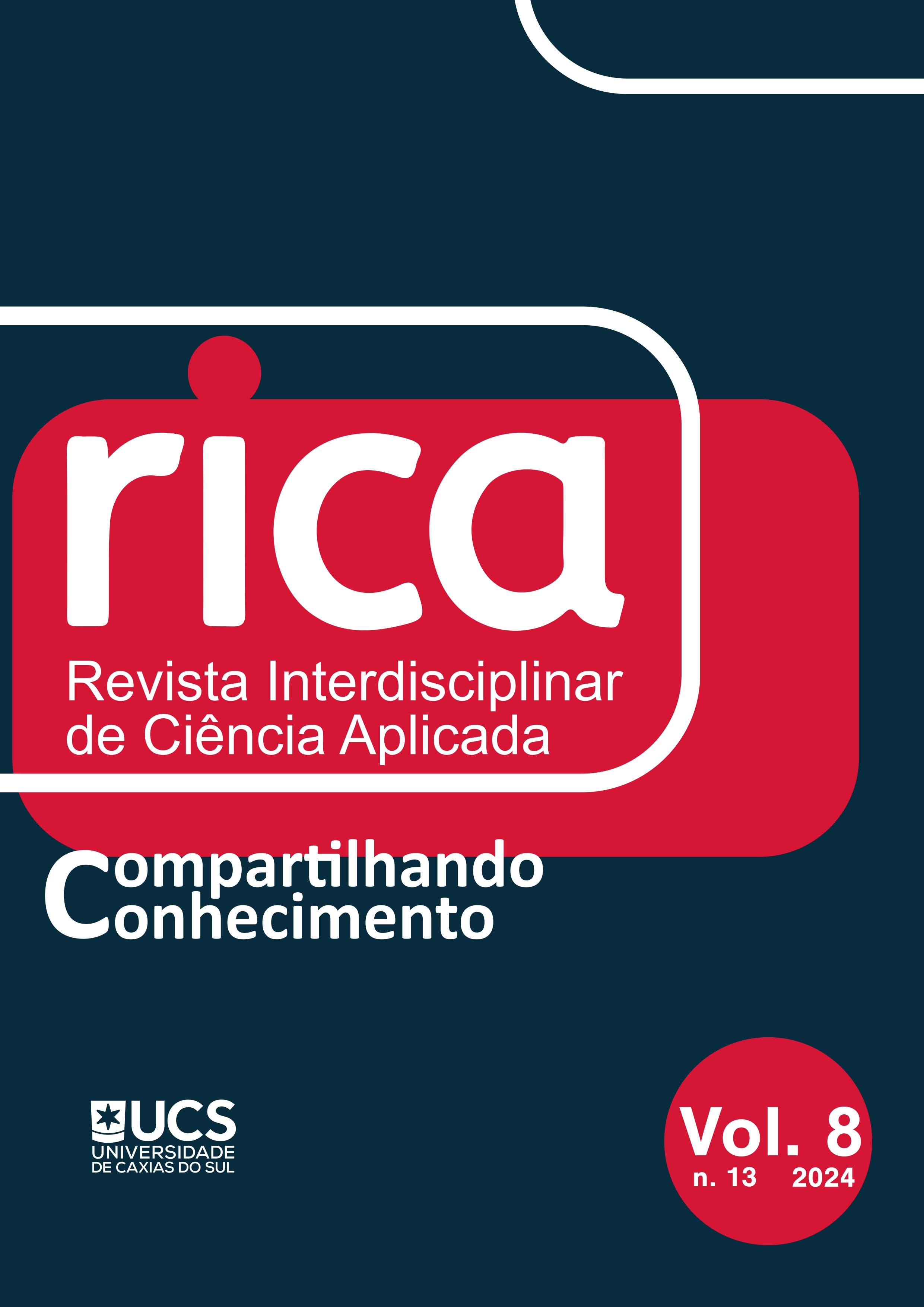Evaluation of the effects of environmental enrichment techniques for tayras (Eira barbara Linnaeus, 1758) kept in captive conditions
DOI:
https://doi.org/10.18226/25253824.v8.n13.12Keywords:
Environmental enrichment, Behavior, Stereotypy, Animal welfareAbstract
Under captive conditions, there are innumerable factors that disadvantage the animal and favor the development of stereotyped behaviors. Therefore, it is necessary to try to satisfy in the best way possible the basic needs of the animals, adopting alternatives for the improvement of their well-being. In this work we developed techniques of environmental enrichment for individuals of tayras (Eira barbara) under captive conditions. The objective was to evaluate whether the application of environmental enrichment techniques would provide benefits and improve the well-being of the animals. The data were collected at Projeto Lontra, located in Florianópolis/SC, and obtained by means of frequency records of two behaviors and analysis of the activity pattern, related to how the animal distributed its time before, during, and after the performance of the enrichment techniques. We carried out 51 h of observation, 25.5 h for each individual. As a result, similar differences were observed in relation to the frequency of stereotyped behaviors in situations before, during, and after enrichment. Nevertheless, it was possible to observe an increase in the frequency of behaviors considered closer to those the animals exhibit in nature, through exposure to enrichment, showing the importance of environmental enrichment for the Eira barbara species.
References
Veloso, A. C. G. (2017). Enriquecimento ambiental em animais de cativeiro (Dissertação de mestrado, Universidade do Porto, Porto). Recuperado de https://repositorioaberto.up.pt/bitstream/10216/111449/2/260244.pdf
Presley, S. J. (2000). Eira barbara. Mammalian species, 2000 (636), 1-6.
Rodrigues, L. A.; Pontes, A. R. M; Rocha-Campos, C. C. (2013). Avaliação do risco de extinção da irara Eira barbara (Linnaeus, 1758) no Brasil. Local de publicação: Biodiversidade Brasileira.
González-Maya, J. F., Zárrate-Charry, D., Vela-Vargas, I. M., Jiménez-Alvarado, J. S., & Gómez-Hoyos, D. (2015). Activity patterns of Tayra Eira barbara populations from Costa Rica and Colombia: evidence of seasonal effects Patrones de actividad de poblaciones de la Tayra Eira barbara en Costa Rica y Colombia: evidencia de efectos estacionales. Rev. Biodivers. Neotrop, 5, 96-104.
Fernandes, G. A. A., Santino, M. B., & Oliveira, M. A. B. (2011). Análise comportamental do Eira barbara em cativeiro no Zoológico do Parque Estadual de Dois Irmãos. In Anais do I Congresso Nacional de Ciências Biológicas (pp. 77-83).
Arauco, J. K. Q. (2015). Efectos del enriquecimiento ambiental en el comportamiento del Ucate: Eira barbara (Mustelidae) en el jardín zoológico de la UNSAAC-Cusco.
Cheida, C. C., Nakano-Oliveira, E., Fusco-Costa, R., Rocha-Mendes, F., & Quadros, J. (2006). Ordem carnívora. Mamíferos do Brasil.
Pereira, R. L. A., & Oliveira, M. A. B. D. (2010). Etograma do Eira barbara (Carnivora: Mustelidae) em cativeiro. Revista de Etologia, 9 (1), 45-57.
Carlstead, K., & Seidensticker, J. (1991). Seasonal variation in stereotypic pacing in an American black bear Ursus americanus. Behavioural Processes, 25 (2-3), 155-161.
Mason (1993) Forms of Stereotypic Behaviour. In: LAWRENCE, A. B.; RUSHEN, J. Stereotypic animal behaviour: fundamentals and applications to welfare. Wallingford: CAB International, p. 7-40.
Broom, D. M., & Molento, C. F. M. (2004). Bem-estar animal: Conceito e Questões relacionadas revisão. Archives of veterinary Science, 9 (2).
Boere, V. (2001). Environmental enrichment for neotropical primates in captivity. Ciência Rural, 31, 543-551.
Gonçalves, M. A. B. Da Silva, S. L., Tavares, M. C. H., Grosmann, N. V., Ciprete, C. F., & Di Castro, P. H. G. (2010). Comportamento e bem-estar animal. In ANDRADE, A. et al. (Orgs.). Biologia, Manejo e Medicina de Primatas Não Humanos na Pesquisa Biomédica. Rio de Janeiro: Fiocruz, p.137–160, 2010.
Krebs, J. R., & Davies, N. B. (1996). A modelagem de sinais: ecologia e evolução. Introdução à Ecologia Comportamental. Atheneu Editora São Paulo.
Lorenz, K. (1996). Fundamentos da etologia. São Paulo: Edunesp.
Del-Claro, K. (2004). Comportamento animal: uma introdução à ecologia comportamental. Jundiaí: Editora Conceito.
Garcia, L. C. F. (2021). Bem-Estar Animal-Enriquecimento Ambiental e Condicionamento. Curitiba: Editora Appris.
Weather Spark. (2022). Histórico de condições meteorológicas em outubro de 2021 em Florianópolis. https://pt.weatherspark.com/h/m/30020/2021/10/Condi%C3%A7%C3%B5es-meteorol%C3%B3gicas-hist%C3%B3ricas-em-outubro-de-2021-em-Florian%C3%B3polis-Brasil
Oliveira, P. D. K. M., & Carpi, L. C. (2016). Enriquecimento ambiental para Ariranha (Pteronura brasiliensis) no zoológico de Brasília. Atas de Saúde Ambiental-ASA (ISSN 2357-7614), 4 (1), 30-46.
Panizzon, P., & Azevedo Filho, W. (2019). Estudo comportamental de Eira barbara (Carnivora: Mustelidae) em condições de cativeiro. Revista Interdisciplinar de Ciência Aplicada, 4 (8), 23-30.
Ricci, G. D., Branco, C. H., Sousa, R. T., & Titto, C. G. (2018). Efeito de diferentes técnicas de enriquecimento ambiental em cativeiro de onças suçuaranas (Puma concolor). Ciência Animal Brasileira, 19.
Beresca, A. M. Enriquecimento Ambiental. (2014) In: CUBAS, Z. S.; SILVA, J. C. R.; CATÃO-DIAS, J. L. Tratado de Animais Selvagens – Medicina Veterinária. Paraná: Roca/GEN, p. 63-73.
Dias, B. N. O. (2010). Enriquecimento Ambiental para o núcleo de Leopardo-das-Neves no Jardim Zoológico de Lisboa (Tese de doutorado, Universidade de Lisboa, Lisboa). Recuperado de http://hdl.handle.net/10451/2837
Broom, D. M. (2011). Bem-estar animal: Comportamento Animal, 2a, ed. Yamamoto, ME, Volpato, GL, Natal, RN; Editora da UFRN.
Farris, Z. J., Gerber, B. D., Karpanty, S., Murphy, A., Andrianjakarivelo, V., Ratelolahy, F., & Kelly, M. J. (2015). When carnivores roam: temporal patterns and overlap among Madagascar's native and exotic carnivores. Journal of Zoology, 296 (1), 45-57.
Pizzutto, C. S., Scarpelli, K. C., Rossi, A. P., Chiozzotto, E. N., & Leschonski, C. (2013). Bem-estar no cativeiro: um desafio a ser vencido. Revista de Educação Continuada em Medicina Veterinária e Zootecnia do CRMV-SP, 11 (2), 6-17.
Broom, D. M. (1986). Indicators of poor welfare. British veterinary journal, 142 (6), 524-526.
Fávaro, J.C., Queiroz, F., Baldini, C. (2010). Uso de la hoja del plátano en el enriquecimiento ambiental con irará (Eira barbara) en el Bioparque Jaó, Brasil.
Downloads
Published
How to Cite
Issue
Section
License
Copyright (c) 2024 Machado and Guzzo

This work is licensed under a Creative Commons Attribution 4.0 International License.
Authors keep the copyright and cede to the journal the right of publishing first. Published works are licensed under a Creative Commons Attribution 4.0 International (CC BY 4.0) license, allowing the sharing of the work with recognition of the authorship and initial publication in this journal.






